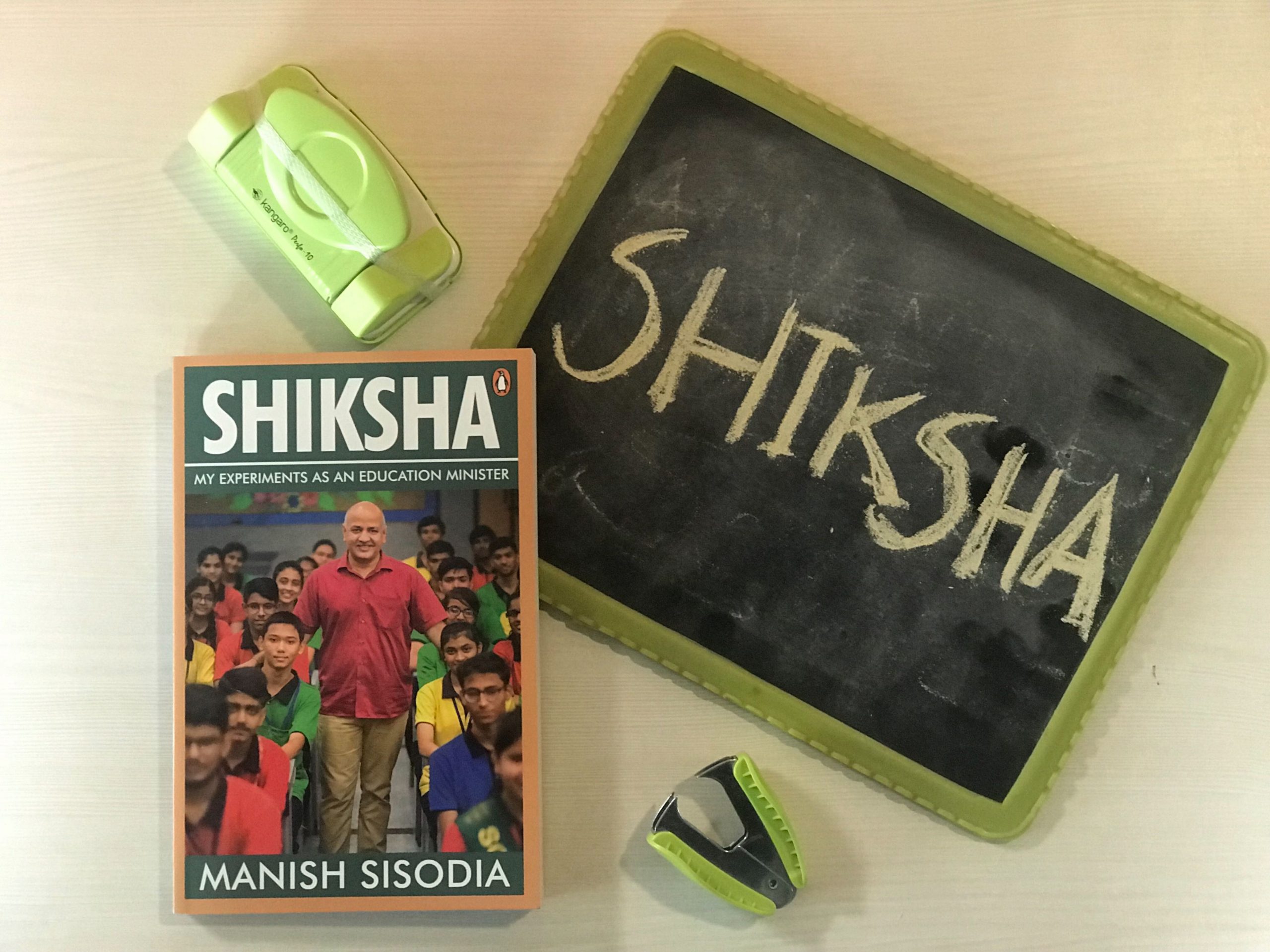
Manish Sisodia, Delhi’s deputy chief minister and education minister, is the visionary instrumental in ushering in evolutionary change in the public school education system. Recounting his experiences and experiments as an education minister, this book offers blow-by-blow account of this amazing success story. Shiksha, a book of hope and possibilities, will inspire everyone who is poised to make a difference in society through education.
Read an excerpt from the book below:
—
In Delhi, government schools have brought new hope in the education system by scoring a pass percentage of over 96 per cent this year. This is a great class 12 result. The fact that these are the best results in the last twenty-one years makes this an important landmark. What fills me with pride is that in today’s date, there are many Delhi government schools that are preferred over private schools by parents for their wards. Another feather in our cap is that the admission fee of many big private schools has not increased in the last four years. This is because the government got the accounts of these schools checked and found that they had crores of funds lying in surplus. Education departments from all over the country are now keen to visit Delhi government schools to understand what exactly is happening in this city that has drawn such attention! Not just national but many international delegations are paying Delhi a visit just to understand its education model.
During the days of agitation, in 2010–11, Arvind Kejriwal and I would often wonder why education was not at the centre of politics. Why was it that governments never allotted the requisite amount of money in budgets? Why was education not on anyone’s election agenda? In 2015, when Kejriwal was voted in as the chief minister by Delhi, with AAP getting sixty-seven out of seventy seats, it was our turn to answer these questions. We were now answerable to ourselves and the country’s politics. As soon as he became the chief minister, Kejriwal made it clear to all ministers and officers that education was the topmost agenda of his government. After four and a half years since then, as I write the introduction to this book, I can say with a great deal of happiness that our government has changed the people’s perception.
It is a fact that education has not been in focus in political discourse. The reason for this is that it isn’t easy to focus on education while doing political work.
There are two main reasons for this: One, we lack an organizational system in a big way. Usually, all education related decisions are taken by the education minister or the people in the education ministry or the education directorate. If we go by the prevailing norms, there is no need for them to have an experience in or understanding of education. Any person, whose party is in majority and who has been voted in, can become the education minister; any senior IAS officer can become a director or secretary of education. These three are the principal stewards of education, but neither at the Centre nor at the state level is it important for them to have some experience in or understanding of the sector. In my view, those who understand education do not necessarily have the authority to bring about a positive change, and the ones who take decisions mostly lack the understanding. This is one reason for the current dismal situation in India. The other reason, in my opinion, is that there is no instant gratification when it comes to improving education systems as the hard work yields results later. Today’s politics wants instant results. The public expects quick solutions to issues from its government. In such a situation, it becomes easier to pacify them by constructing roads or flyovers, or to float policies such as pension schemes that make a bit of a difference to the lives of people. There has been a tradition to use popular schemes to woo voters but working on education doesn’t just mean building a school. Improving education also means constantly supervising hundreds and thousands of teachers—to ensure that they spend more time in schools, that they attend training programmes, and to make them more accountable. These are enough to make anyone unpopular among teachers but without these, without their support, without putting them in ‘mission mode’, it is impossible to make any improvements in the education sector. This is probably the reason why previous ministers have not made education the focus of their agenda.
In the last four years, many of my well-wishers have commented that we have been doing great work in the sector of education and the country needs development in this arena the most, but we should also float schemes that will make our politics successful. By this they mean winning elections. The success or failure of politics is in future’s womb but, for now, Delhi is proof that if there is political willingness, the country’s growth vis-à-vis education is possible. The Delhi education model is testament to the fact that with extreme diligence and political willpower government schools can be made like private schools even at a time when their performance across the country is underwhelming. Delhi is also an example of how with political interest and honest governance, the steeply rising fees in private schools can be regulated, which is a major source of concern for a lot of parents.
I am writing this book to document this story of transformation, so that people can appreciate these finer points which have been effective in helping the Delhi government change the face of government schools. It is also to familiarize them with the reason behind these efforts because just getting good results and building great structures do not translate to good education. Education is not merely about creating a society equipped with school and college certificates. Education is more than that, much more.
Shiksha is available now!









